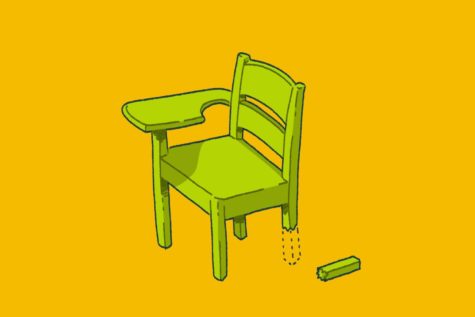OPINION | More intentional classroom assignments would benefit students

Many Tulane University students may be accustomed to having classes in unusual rooms, particularly after the COVID-19 pandemic called for social distancing. From virtual Zoom rooms to temporary tents on the quads to large auditoriums, classroom spaces at Tulane have certainly seen many forms.
However, that is not to say that the classroom environment is inconsequential and should be subject to frequent and drastic change. In fact, the physical layout and location of a classroom have a profound effect on the behavior and learning ability of both students and teachers.
Now, in the aftermath of the pandemic, we are very fortunate that on-campus classes have resumed, but the classroom situation seems to still be recovering from the shake-up.
For instance, some classes are held in small rooms fit for under 10 people, while other classes are hosted in auditoriums with over 300 seats. Evidently, classroom sizes at Tulane vary drastically.
It would be reasonable to assume, then, that the large variety of classroom sizes are meant to accommodate variously-sized classes and their particular academic needs. Some classes are discussion-based and require a more intimate setting. Others may be large, lecture-based classes that require more seats and the acoustics of an auditorium.
Unfortunately, however, Tulane does not indicate any effort to assign classroom spaces based on the learning ability or needs of students and professors.
Tulane does acknowledge the high demand for suitable classroom spaces at this time as the Office of the University Registrar said, “Classroom demand is at a record high.”
According to the University Registrar Instruction Guide for Schedulers, “The Registrar will make every effort to accommodate specific room requests but cannot guarantee the fulfillment of those requests.”
According to this statement, specific room requests are not sufficient for professors to secure a classroom, so how are classroom spaces assigned?
Put simply, when scheduling classes, professors indicate a room selection based on available options for their department at the time of their class. Available classroom options are further limited for some professors depending on their department. The Registrar Instruction Guide notes, “If your department owns any rooms, those will be listed for your classes only.”
Professors may make certain requests for room changes, but not all requests can be met. “Due to limited classroom space on campus, the Registrar’s Office will do its best but cannot guarantee to meet requests,” the Instruction Guide for Scheduling said.
Based on the information provided by the Office of the University Registrar, classrooms are assigned relatively arbitrarily, with special consideration given based on certain departments but not based on the educational needs of students.
There are numerous factors that contribute to the design of a classroom that facilitates successful learning. For instance, small classes that involve students working in discussion groups would benefit from small classrooms with clustered tables or desks.
Regrettably, neither the teaching style of professors nor their ability to adhere to their teaching style are considered during the process of assigning classrooms.
Moreover, the current process of classroom selection seems to ignore medical or health factors, which have been such a significant determinant for the past couple of years. Currently, Tulane does not have any regulations in place for social distancing in classrooms. Thus, some classrooms have very spaced out desks, reminiscent of COVID-19 times, while other rooms, once again in use after COVID-19, have side-by-side seating.
Socially-distanced classrooms to prevent the spread of COVID-19 may no longer be necessary; however, the concern with which the university approached potential medical and health concerns should not be abandoned.
Or, if medical and health concerns are not sufficient for determining classroom assignments, there should be some explanation for the differently spaced out classrooms. In other words, drastically different classroom layouts may drastically influence learning, and at the very least, the university should be concerned with that.
Amidst a rapidly evolving world, the university does their best to adapt. Understandably, classes must be held and not every room will cater perfectly to the needs of that class. However, if Tulane’s adaptability has demonstrated anything, it is the importance of the classroom environment and not forgoing excellent learning conditions.
Your donation will support the student journalists of Tulane University. Your contribution will allow us to purchase equipment and cover our annual website hosting costs.


